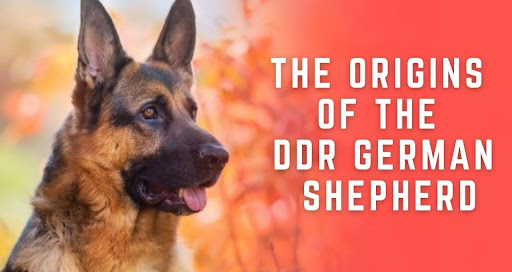
The Origins of the DDR German Shepherd
The DDR German Shepherd has a story rooted in one of the most defining eras of the 20th century: the Cold War. After World War II, Germany was divided into East and West, and the East German government took a very serious approach to creating working dogs that would serve the state’s interests. They needed strong, disciplined, and intelligent dogs that could guard borders, patrol restricted zones, and protect military installations.
This led to a specialized breeding program that developed what became known as the DDR German Shepherd. Unlike show-line dogs bred for appearance, these dogs were bred with a clear purpose: function over form. The East German Shepherd was muscular, hardy, and able to handle tough conditions without losing focus on its duties. Even decades later, this bloodline is remembered as one of the most dependable for working purposes.
For those interested in exploring more about the products and heritage of this breed, you can find detailed information here, making it easier to understand why these dogs remain admired today.
Why the DDR German Shepherd Stood Out
The East German government maintained strict standards for breeding, which meant only the best dogs were selected. The DDR German Shepherd was bred for traits such as intelligence, loyalty, stamina, and a fearless yet controlled temperament.
Some key characteristics included:
- A strong, athletic build capable of withstanding harsh environments
- High trainability for tasks such as guarding, tracking, and patrolling
- Deep loyalty and protective instincts toward handlers
- Stable nerves that made them reliable even in high-pressure situations
This rigorous breeding created a reputation for excellence, which is why DDR German Shepherd puppies remain highly sought after by trainers, working dog enthusiasts, and families who value both protection and companionship.
DDR German Shepherd Puppies and Their Training
Raising a DDR German Shepherd puppy is not like raising a typical pet. Because of their strong genetic heritage, they are naturally more inclined toward obedience and discipline, but they also require consistent training to reach their full potential.
Owners of DDR German Shepherd puppies often notice that these dogs display an early alertness and eagerness to learn. They thrive when given structured routines, mental stimulation, and physical challenges. Without this, their energy can become difficult to manage. However, with the right environment, a DDR German Shepherd puppy can grow into a balanced adult dog that is both protective and affectionate.
The East German Shepherd and Its Legacy
Although the Cold War eventually ended and East Germany ceased to exist, the East German Shepherd bloodline lived on. Breeders across the world worked hard to preserve this distinct line because of its historical and practical value.
East German Shepherd puppies are considered special because they carry a legacy of resilience and discipline. While they are no longer guarding borders as they once did, they now serve roles in law enforcement, military units, search-and-rescue missions, and even as loyal family companions. The same traits that made them ideal for border control still make them excellent protectors of homes and loved ones.
DDR German Shepherds vs. Modern Show Lines
Today, many German Shepherds seen in shows are bred more for appearance than utility. Their sloped backs and lighter builds are often criticized for compromising health and functionality. The DDR German Shepherd, by contrast, was never bred for looks but for strength, endurance, and performance.
This distinction makes DDR German Shepherd puppies a preferred choice for those who want a working dog that combines physical power with sharp intelligence. Families who adopt them also find peace of mind knowing that these dogs are naturally protective and reliable, with instincts deeply rooted in their history.
Why Families Still Choose DDR German Shepherds
Even though the Cold War is long over, the DDR German Shepherd has smoothly transitioned into a modern role as a loyal family companion. Families are often drawn to their protective instincts, but they are equally impressed by their gentle and loyal nature with children when properly trained and socialized.
Some reasons families continue to choose them include:
- A natural ability to guard homes and loved ones
- Intelligence that makes training easier compared to other breeds
- A balance of strength and affection, making them reliable yet loving companions
- A rich historical background that adds to their uniqueness
This is why many breeders still focus on maintaining the original bloodlines, ensuring that DDR German Shepherd puppies continue to carry the same qualities their ancestors were known for.
The Lasting Impact of DDR German Shepherds
The history of the DDR German Shepherd shows how a breed can evolve from being a tool of the state to becoming a beloved companion in households around the world. Their journey from Cold War guard dogs to loyal protectors in modern times is a testament to their adaptability and unmatched traits.
For many dog enthusiasts, choosing a DDR German Shepherd is not just about owning a pet but about becoming part of a living legacy. The East German Shepherd bloodline continues to stand as proof that careful breeding with purpose can create dogs that excel in both work and companionship.
Their endurance, intelligence, and loyalty remain as impressive today as they were decades ago, ensuring that DDR German Shepherd puppies will continue to be cherished by future generations who value both history and companionship.

